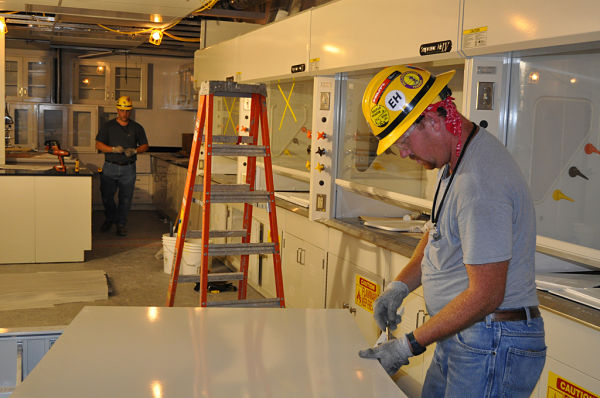If you’re anything like me, your biggest lab fear is working with expensive equipment prone to damage. HPLC is a wonderful tool, capable of separating, identifying, and quantifying a vast array of compounds, but it requires an attentive scientist to properly handle and maintain each component.
In this article I’ll describe a few basic handling and preventative maintenance techniques for most HPLC systems. I’ll also point you toward a few invaluable resources that I peruse whenever I’m having difficulty with HPLC.
So without further ado, here are some general tips to follow when using HPLC!
1. Degas and Filter your Solvents
Air bubbles in liquid chromatography can cause problems ranging from flow rate variability to mystery peaks. They tend to occur when multiple solvents are blended together because the solubility of oxygen and nitrogen in a solution changes when a new mixture is formed. The good news is that many HPLC systems now come with mobile phase degassers.
Filtering the solvent is important to prevent pressure issues. Use a 0.22 µm bottle-top filter or a Buchner funnel with filter paper to remove any particulate matter that might clog the instrument. Just be sure that your filter is compatible with the solvent you are using!
2. Sample Prep Will Make or Break an HPLC & Column
Speaking of pressure, it is crucial to prepare your sample such that it won’t get stuck in the instrument or column. Biological samples are enormously complex and can cause some serious headaches if they get stuck.
Things to be aware of when running biologically-derived samples include:
- ALWAYS filter samples. I’ve had some very long days after an autosampler needle got clogged due to lack of filtering. Those things are hard to fix and expensive! Insoluble components can also get stuck in columns, leading to irreproducibility, broken equipment, and irritated colleagues.
- Is there any way to simplify the content of your samples? For example, can you use subcellular fractionation to focus on a particular part of the cellular proteome? Can you perform an extraction to focus on a particular component of your sample?
- Are there components of your sample that might precipitate out in the solvent(s) you are using? Will a precipitate form over time? If so, adjust your sample prep or method to address this.
Several companies offer guides and even online seminars on sample preparation, so check out those resources when designing a sample preparation procedure!
3. Check for Leaks Before & During a Run
Many systems have leak detectors that automatically shut down solvent pumps. But if a leak is slow to reach the detector and you have several samples, you might come in after an overnight run to find that most of your samples didn’t even run—or worse, that the detector failed and your instrument is covered in your mobile phase!
To prevent this, always do a once over to identify leaks before leaving the HPLC to do its thing, especially check out parts that are often jostled or changed, like column connections.
4. Run Pre- and Post-Run Blank Methods
Besides finding out if a contaminant peak is present before you run your valuable samples, running blank methods will alert you to any instrument issues that result from your run. Things like pressure increases and column contamination are easy to identify immediately after a run. In addition, pinpointing exactly what kind of samples are causing trouble can help to improve sample prep!
5. Keep Good Great Records
In the same vein, record keeping and taking note of any abnormal issues or new component installations can go a long way. Some HPLC components need to be changed regularly (I’m looking at you, inlet frits), whereas others may only need replaced if damaged.
A side note on record keeping: retention times for a particular compound may change over time due to several reasons (for instance, a capillary tube being replaced), so keeping a good lab notebook proves useful for HPLC troubleshooting, too!
6. When in Doubt, Crowdsource or Call the Manufacturer
We’ve all gotten to the point in which, despite all the Googling we do, we still don’t know how to solve an instrumentation problem.
ChromAcademy is a website dedicated to teaching and connecting analytical chemists of all levels. It includes online modules and podcasts on HPLC as well as GC, MS, and even IR. Forums are available for users to connect and discuss separation techniques and instrument troubleshooting.
Don’t forget to call your HPLC manufacturer, they are also ready and willing to give you some pro tips. I’ve called our own HPLC company several times to identify exact parts on our instrument that need fixing or replacing. Once, they were able to walk me through fixing the problem myself instead of reordering it!
While this is by far not an exhaustive list, it should give you a few ideas for keeping your HPLC happy and healthy. What tips and tricks do you have to offer on HPLC?







